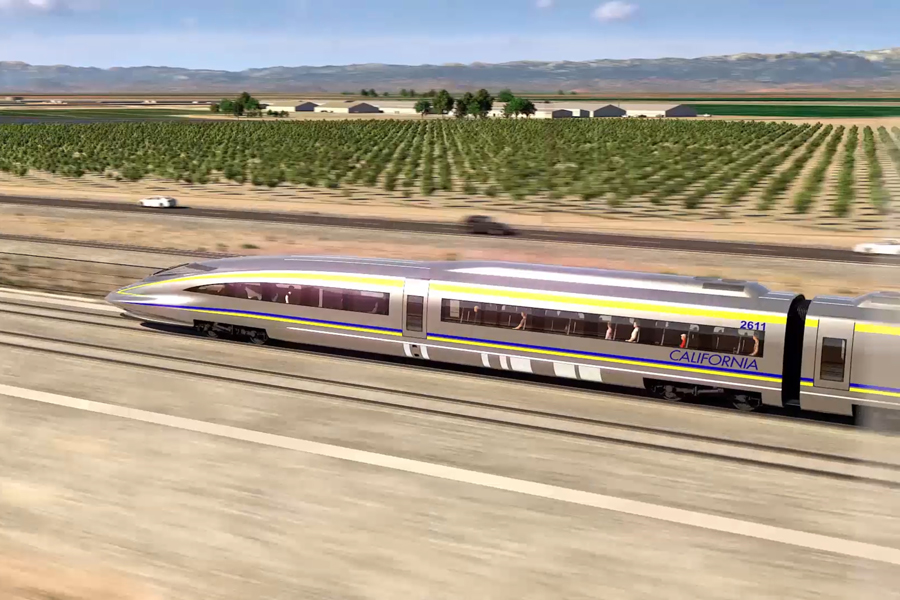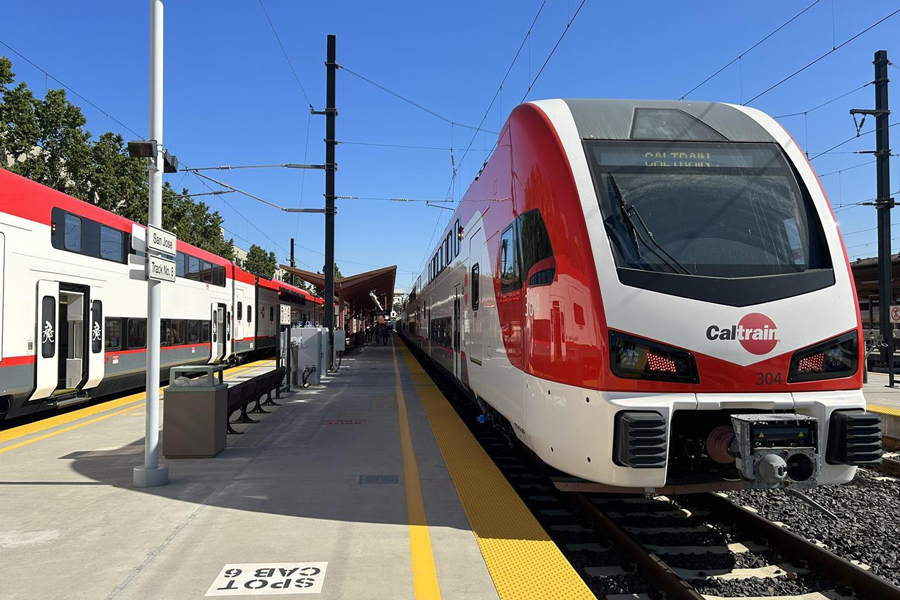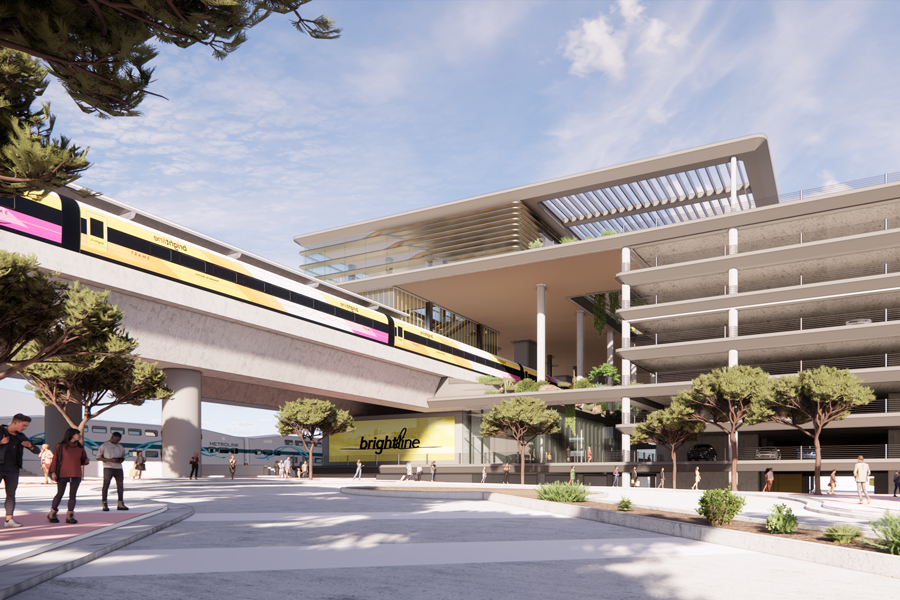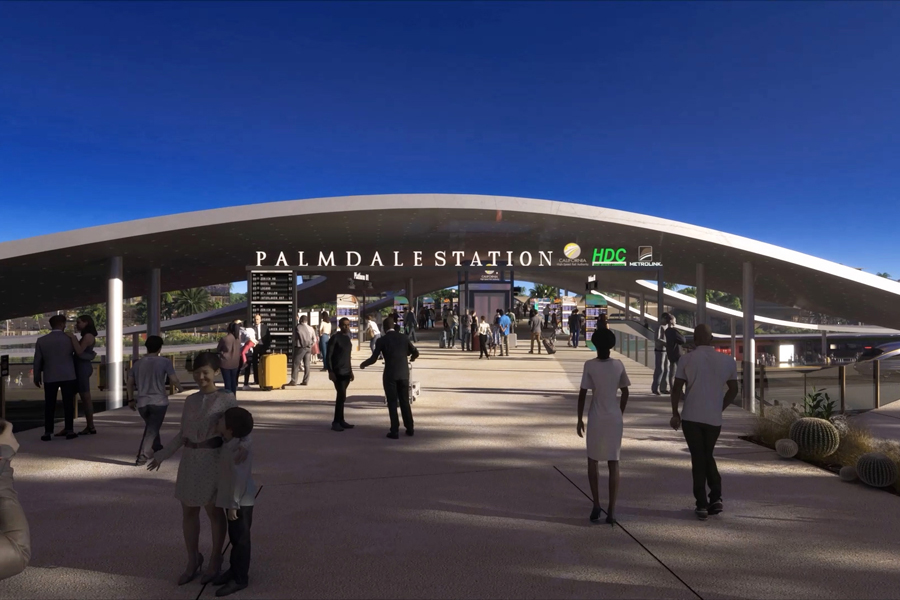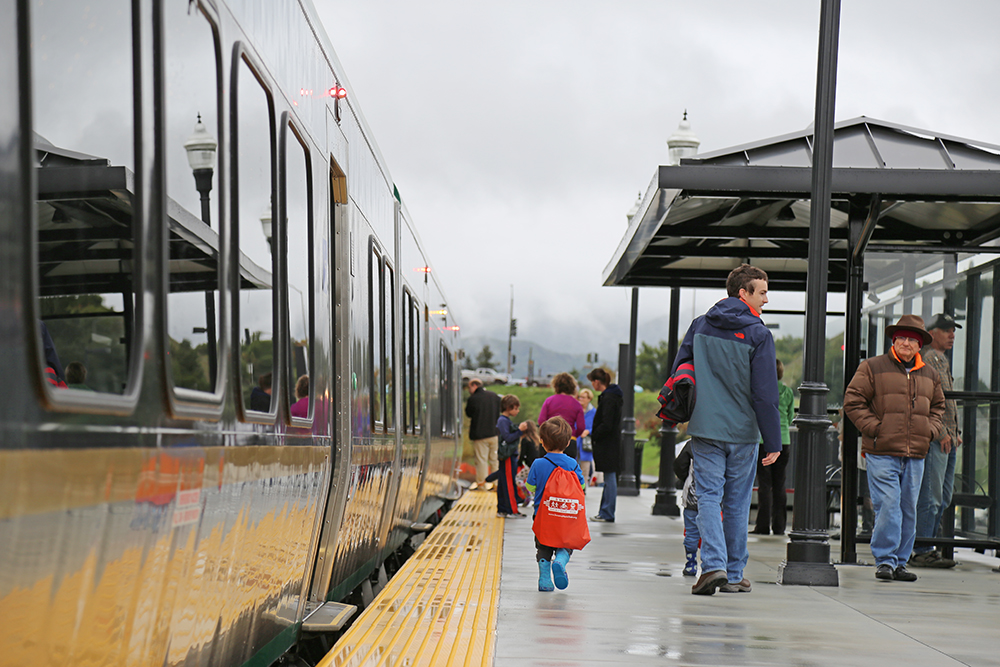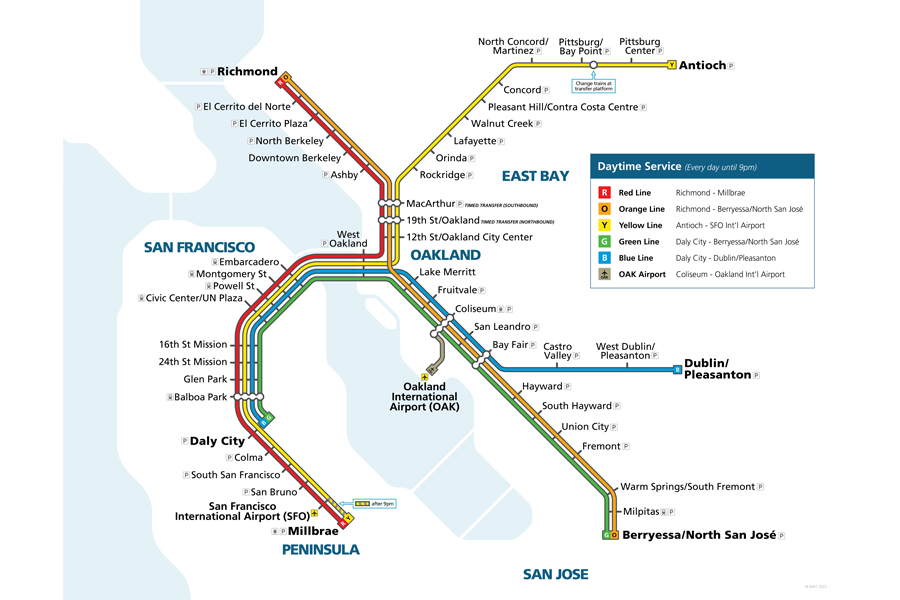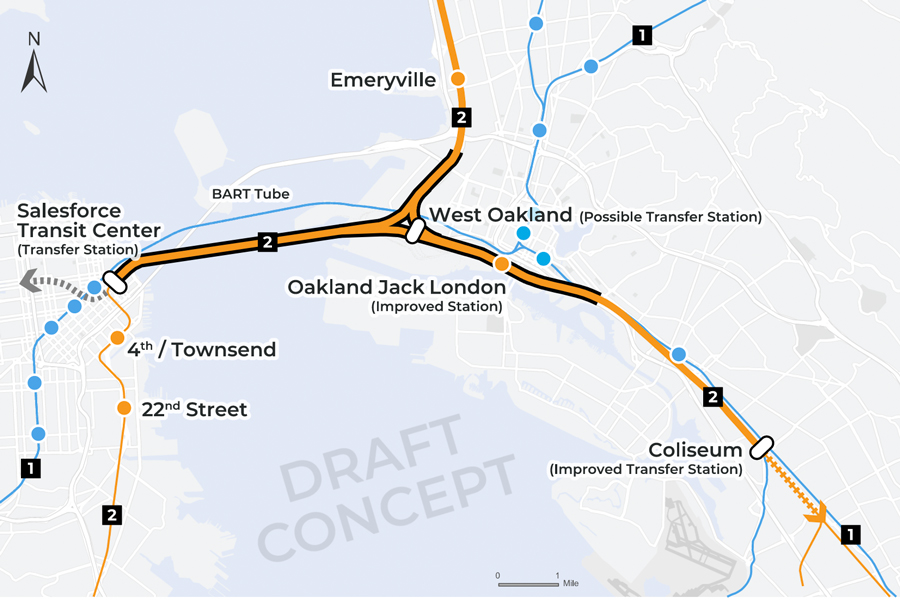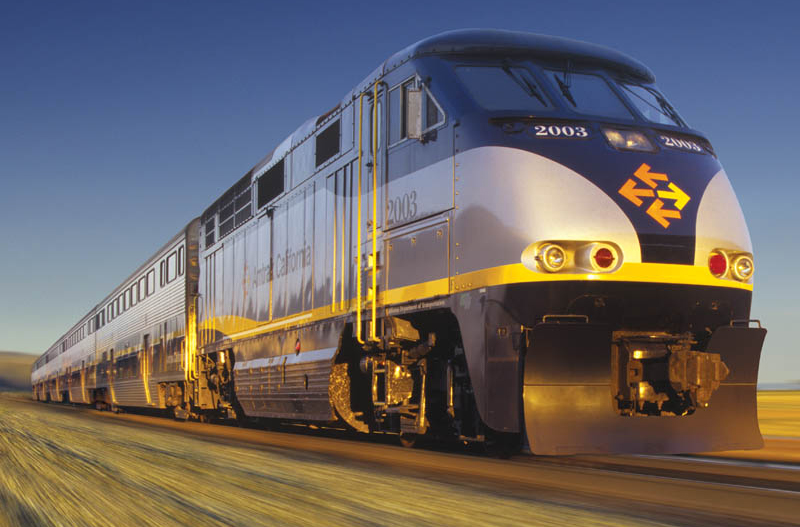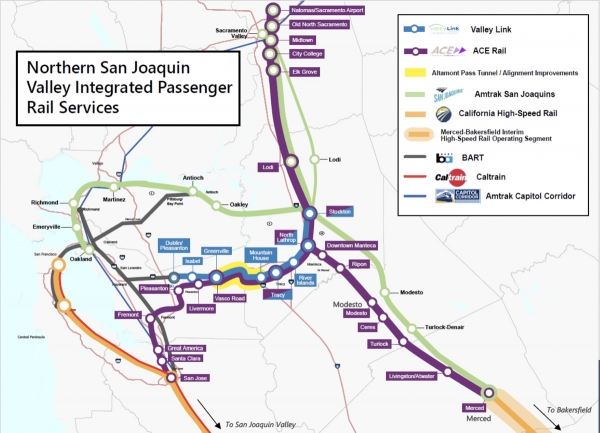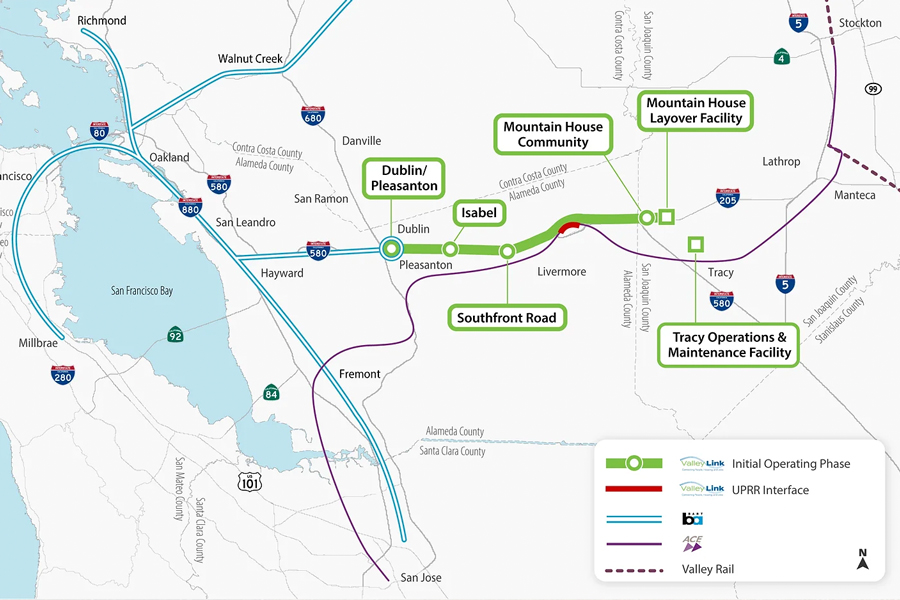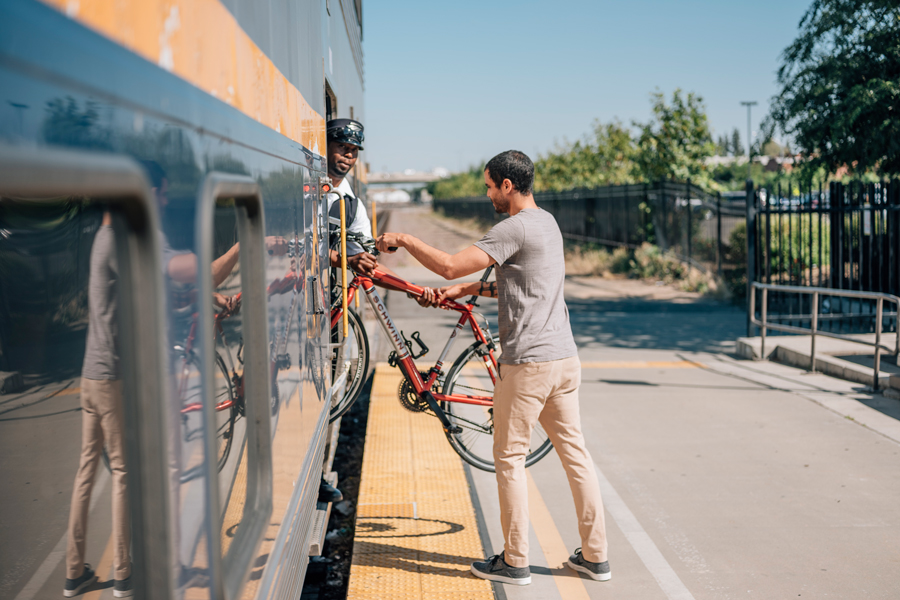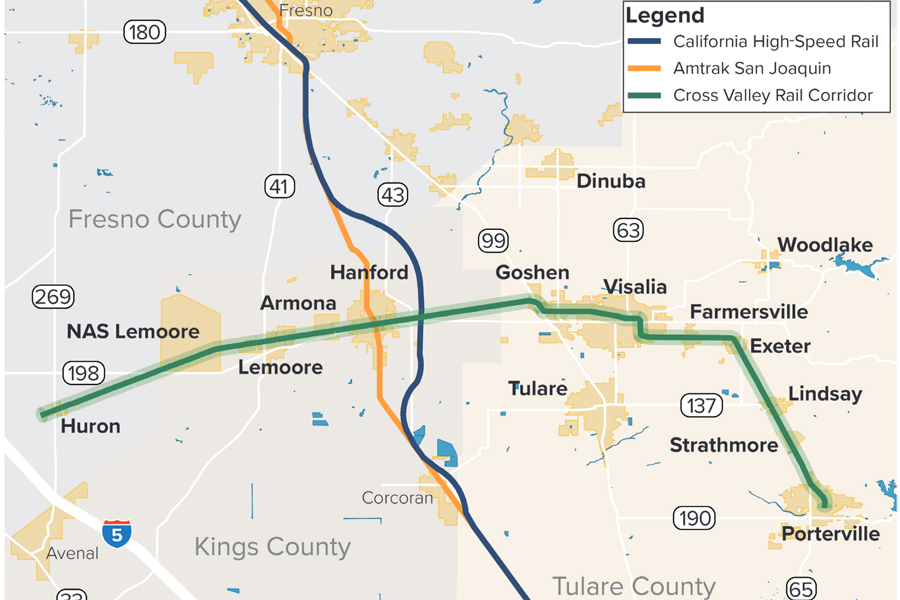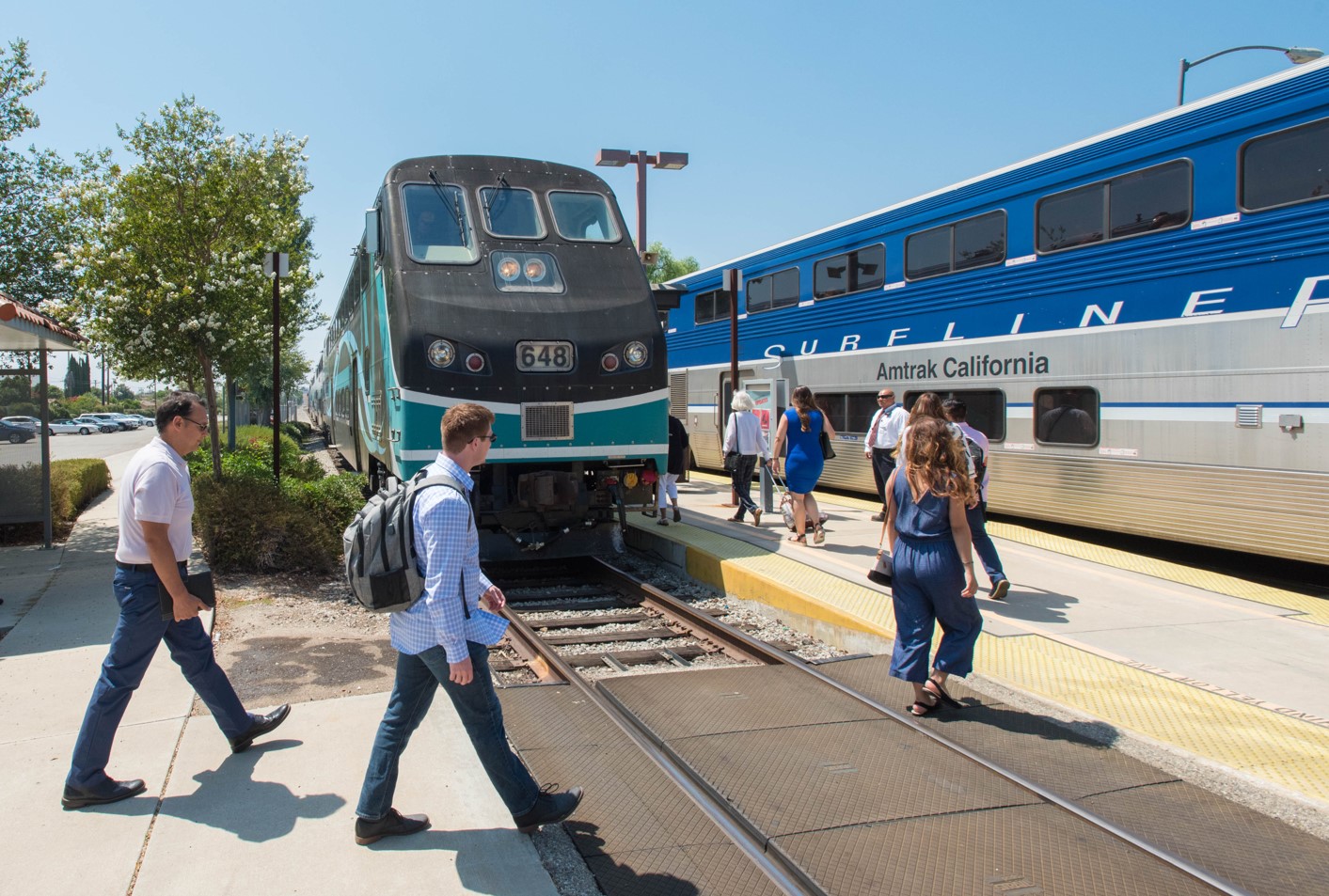30 years of Steady Growth
Since 1990, California has invested heavily in passenger rail and transit networks. Now, it is possible to travel most of the state without a car.
High-speed rail will make it 10 times better.
The Issues
California’s regional rail routes, combined with an extensive feeder bus network, offer a model for other states. Multiple agencies are driving innovation in service delivery. The best state rail plan in the nation is tying it all together.
And, by cutting new tunnels through the mountains, high-speed rail will offer the speed and frequency needed to overcome California’s entrenched car culture.
The Obstacles
A federally-led Interstate Railway Program, structured like the Interstate Highway Program is needed to get it all done.
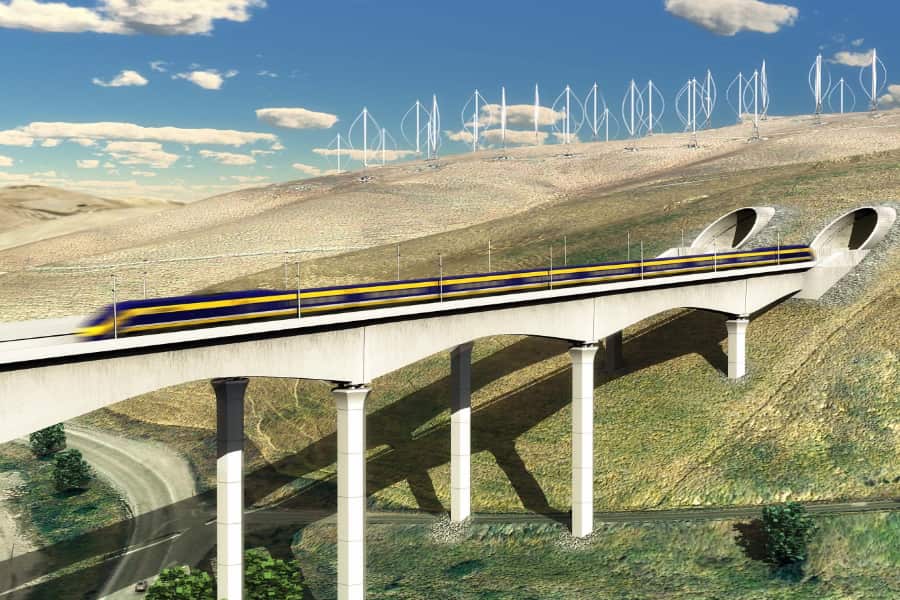
Getting trains through Pacheco Pass and Tehachapi Passes will transform travel throughout the state.
Build the Backbone To Kickstart California
Speed and frequent departures are needed to overcome California’s entrenched car culture.
How will that happen? By building a backbone that:
- Closes the gaps between the Central Valley and the Silicon Valley and the LA Basin
- Links the Silicon Valley and LA in less than 3 hours
- Has timed connections to regional rail, regional buses, and local transit
- Unites hundreds of cities and towns
Los Angeles to San Francisco in Three Hours
If you’re driving, you either wind through the Central Valley or up the coast, on a scenic road that doesn’t lend itself to speed. At best, you’re driving for six hours. Flying is hardly better.
That’s where high-speed trains come in. By cutting new tunnels though the mountains, high speed rail will make the trip between cities faster, easier, and more efficient. Step on a train in Los Angeles in the morning. Ride in comfort with room to stretch around. Be in San Francisco for lunch. It’s within our grasp.

Spain, with mountains similar to California’s, has had high-speed trains since 1993.
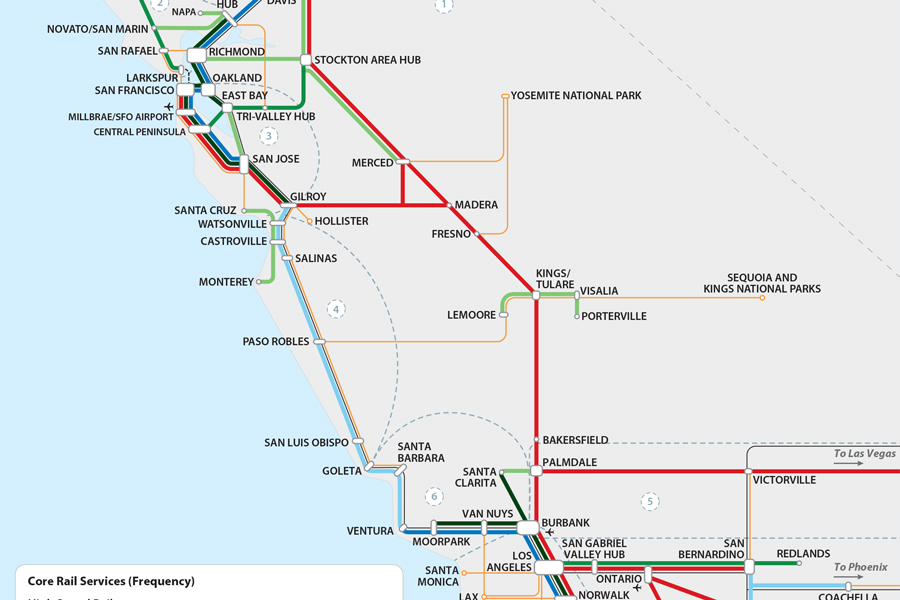
Connecting Hundreds of Cities and Towns
California is more than its biggest cities. There are suburbs, exurbs, rural communities, small towns.
All of these have life and character. All of them have people who deserve better trains and buses. The high-speed backbone makes it possible. With timed connections to California’s excellent conventional trains and buses, high-speed rail will link hundreds of cities and towns across the state.
Take Action
Please join with us in asking Congress to create a national railway program to re-connect America with fast, frequent, and affordable trains.
Corridors and Projects in California
California has the biggest and most aggressive railway program in the country.
Here is an overview of what is in the works.
220-mph Backbone
Caltrain
Brightline West
High Desert Corridor
SMART
BART
Link 21
Capitol Corridor
Valley Rail
Valley Link
San Joaquins
Cross Valley Rail
Lossan Corridor
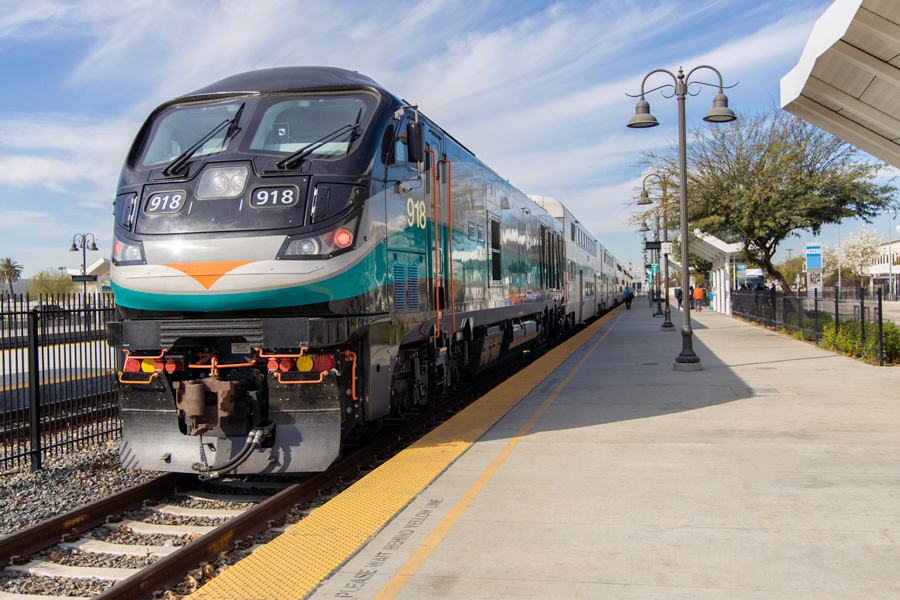
San Bernadino Line
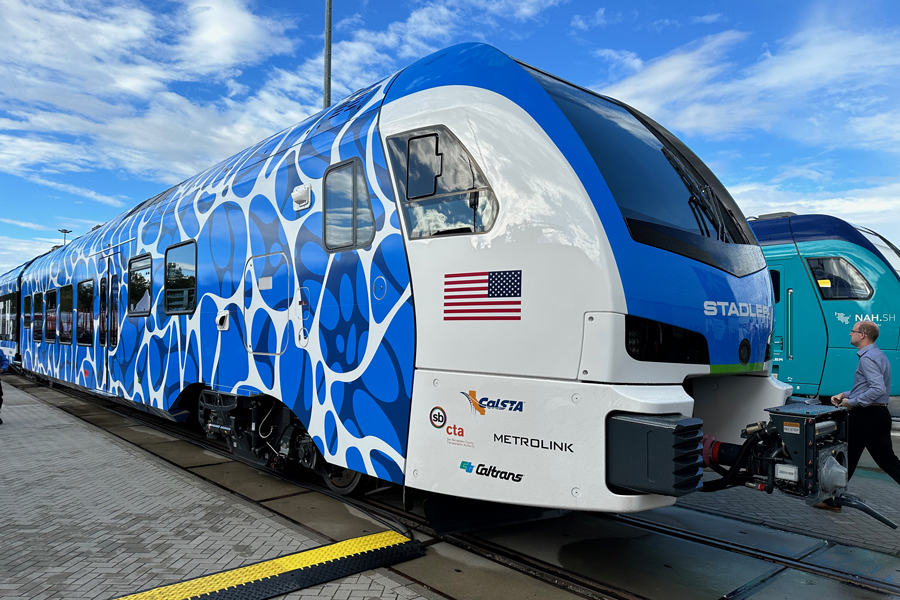
Arrow / Redlands
This 9-mile extension of the San Bernadino line is innovating new trainset designs.

Feeder Bus
California has a large feeder bus network that connects most of the state.
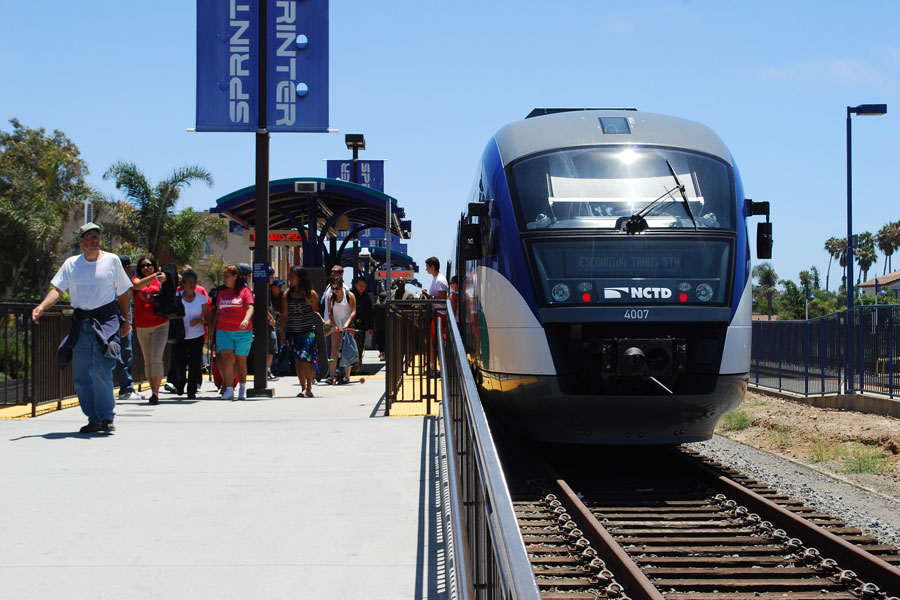
Sprinter
The Sprinter is a feeder line that connects to the LOSSAN Corridor at Oceanside.
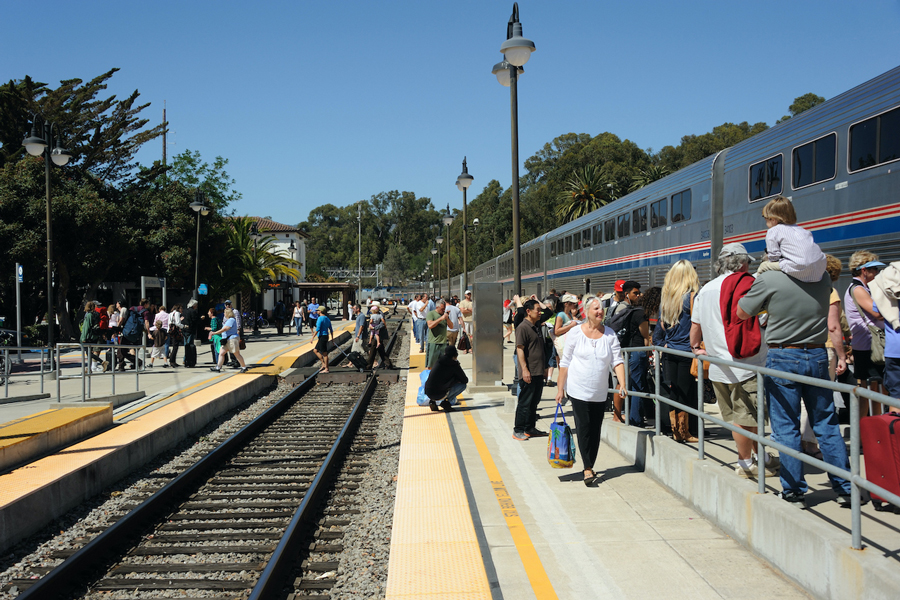
Inter-Regional
California is served by three inter-regional routes that provide the foundation for corridors to surrounding states.
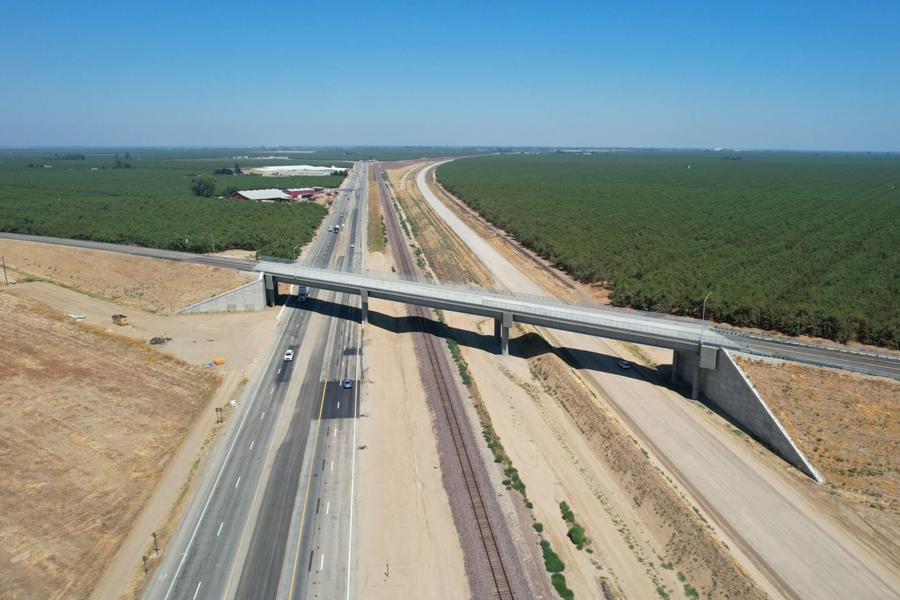
The new Merced Avenue overpass takes traffic over SR 43, as well as BNSF and future high-speed rail lines.
A federal program is needed to get it done.
California is far ahead of the rest of the country in developing high-speed and regional rail. But they are unique. Most of their routes do not cross state lines.
Most states will require an Interstate Railway Program to build multi-state networks. And California cannot achieve its full potential without a federally-led program.
The recent Bi-Partisan Infrastructure Law is a great step in the right direction. Much more needs to be done.
Please join us in asking Congress to create an Interstate Railway Program.

Take Action
The country needs an Interstate Railway Program, like the Interstate Highway Program, to take full advantage of the community, economic, and environmental benefits of trains.
Please join with us in asking Congress to create a national railway program to re-connect America with fast, frequent, and affordable trains.

